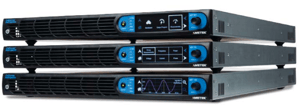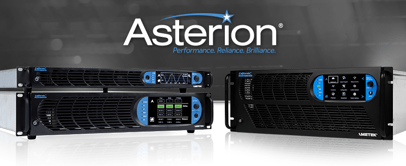It wouldn't be bragging to say that we have a lot of experience with power supplies here at AMETEK Programmable Power. Many of our design and sales engineers have been with us for a long time, and we feel that really gives us an edge when it comes to helping you get the best product for your needs. Their extensive knowledge of our products and applications enable them to recommend just the right products, and you can feel confident in their recommendations.
When it comes to specifying a power source, one of AMETEK Programmable Power's sales engineers is famous for getting right to the crux of the matter. He says that there are three questions that every customer must ask himself or herself before buying a power supply:
- What do you want out of it?
- What are you going to feed it?
- How are you going to control it?
What do you want out of it?
Specifying the outputs of a power supply is the first task. The primary considerations are:
- Type of output: AC, DC, or both AC and DC
- Power output
- Voltage range
- Current capability
While those may be the three most important parameters, they are not the only output specifications that you need to take into account. Another important parameter is the slew rate. The slew rate of a DC power supply is the rate at which the output voltage and output current changes. This characteristic is important in many applications, especially automatic test applications, as the faster a supply reaches a programmed voltage or current, the faster a test will run.
In other applications, ripple and noise, line regulation, load regulation, or similar specifications might also be important. Based on their experience, our sales engineers will ask you a number of questions about your application, to ensure that you get the right power source.
What are you going to feed it?
Once you've determined what you want out of a power supply, the next question to ask is how are you going to feed it. By that we mean how are you going to supply the input power.
For most power supplies over 1,500 W or 1,500 VA, you can't simply plug the supply into a 120 VAC wall socket. At the very least, you'll have to supply 220 VAC single-phase power, and if you have very high power requirements, then you'll have to supply some form of three-phase power.
Before you purchase a supply, consult with your facilities management people to see what's available in your lab or on the manufacturing floor. That way, you'll be sure to purchase a power supply with the right input power configuration.
How are you going to control it?
There are many different way to control a power supply. Many are just controlled manually. If you plan to control yours this way, ensure that the front panel interface is intuitive and easy to use. A good example of an intuitive front-panel user interface is found on AMETEK's Asterion line of power sources.
For computer control, you can choose between Ethernet LXI, USB and RS232 interfaces. The interface you choose will depend on many different factors including the interfaces that you already use in your company, the data transfer rate required, and other factors.
For more information on the right interface for your application, or how to select a power supply in general, contact AMETEK Programmable Power by sending an e-mail to sales.ppd@ametek.com or phoning 800-733-5427.
